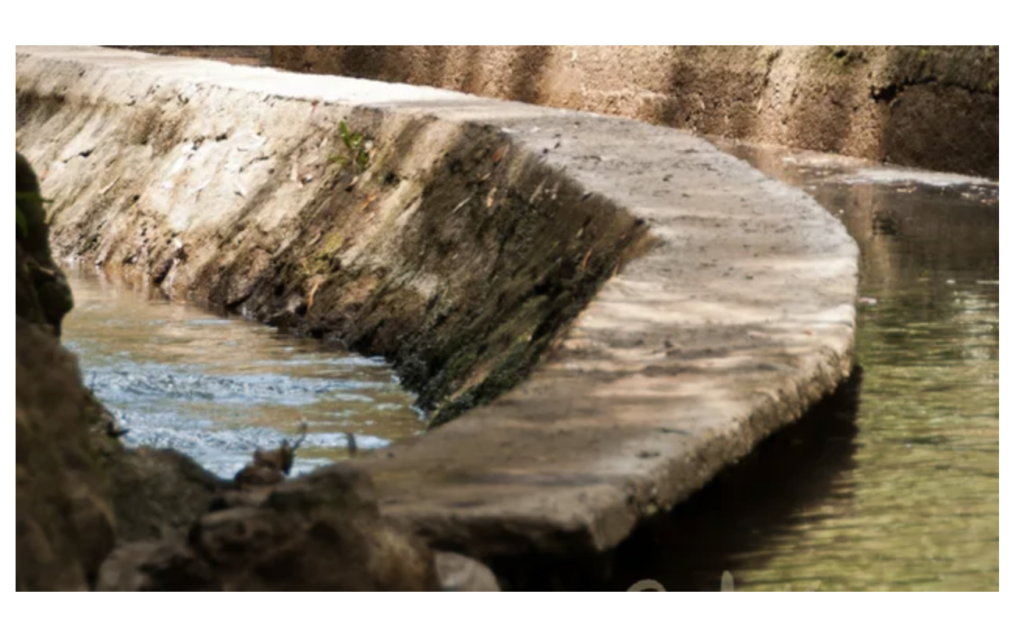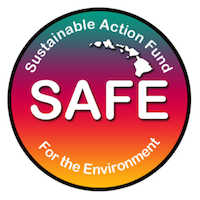
‘This DEIS Is Deficient’: Sierra Club, Maui Tomorrow, and others weigh in on A&B/Mahi Pono’s Draft Environmental Impact Statement for a 30-year water lease.
The public comment period for Mahi Pono/Alexander & Baldwin’s Draft Environmental Impact Statement (DEIS) closed last week, and judging from the dozens of pages of responses I’ve read, this DEIS has more holes in it than bleached coral. Those stalwart folks who actually pored through the 2,700-page tome seemed to find scant substance and lots to question in East Maui Irrigation System’s effort to obtain a 30-year water lease that could significantly alter Maui’s future.
Let’s review. In September, EMI partners A&B and the Canadian pension fund-owned Mahi Pono produced the state-required DEIS. Ideally, the document was supposed to investigate and outline the ramifications of diverting some 80-plus million gallons a day of East Maui water to Central Maui for the next 30 years. Most of the water would be used to irrigate 30,000 acres of crops (that currently exist mainly on paper), and to a smaller extent, provide water to Maui County and Hawaiian Homelands. The public had only 45 days to comment on that document – a mahussive conglomeration of facts and figures purporting to address every environmental, cultural, historical, social, biological, and what-have-you issue relating to the conveyance and use of said waters. On November 7, public comments were due, and now the lease applicants are legally required to address every pertinent comment/question/request before they can move on to the next tier of Let’s Make a Water Deal.
I wouldn’t want to be the person in charge of comment response. Judging from the tiny smattering of submissions I read (five) there could soon be another 2,700 pages added to the DEIS, given the 150-plus detailed questions and comments expressed in that small sample.
All aspects of the document were addressed, ranging from technical questions about a single stream to administrative challenges to the entire lease-getting process. Submitters wanted errors corrected, maps fixed, appendices appended, additional information provided, and all manner of questions answered. Like this one: Why does the DEIS state that the City of Honolulu will receive $120,000 in tax revenues from the Maui County water lease?
Many comments specifically targeted Mahi Pono, a company created by the Canadian Public Sector Pension Investment Board and a California agriculture investment group last year to purchase 41,000 acres of former A&B sugarcane fields and 16,000 acres used by EMI (currently a 50-50 venture with A&B). Since then, much has been made of the irony between the carefully crafted Mahi Pono name (to grow or cultivate morally or properly) and its ongoing “Maui Piss-Off” attitude. Its predominantly California-based executives ignore most requests for community or government engagement in favor of backroom dealing with select county officials.
Farmer and community activist Simon Russell posed 30-plus questions. Although Russell and his “agricultural ohana” were “holding our breaths and hoping that Mahi Pono… will do the right thing,” he wrote, “My perception is… that the company is already wearing out its welcome in the first year.”
That rocky relationship surfaced in questions from Russell and others. What is the fiscal relationship between Mahi Pono, the PSP pension fund, California investment company Trinitas, and another corporate blend of the two, Pomona Farming? What about Mahi Pono’s relationship with A&B, especially in regard to future water use? What about property the two still own together? What about the missing section of the Purchase and Sales Agreement that gives exact details on land parcel ownership? What if Mahi Pono fails? Why should a Canadian pension fund profit from Hawaiian water?
Although it’s likely that A&B/Mahi Pono will find reasons not to answer many of these questions, they’ll still have their hands full. For example, Hana resident John Blumer-Buell wants “complete information and disclosure of salinity levels of all water sources located on property sold to Mahi Pono.” Not exactly a query easily answered in one sentence.
Maui’s two big environmental groups, Sierra Club and Maui Tomorrow, didn’t mince words in their respective comments.
“This DEIS is deficient,” Sierra Club said bluntly. “It does not incorporate known information about the natural and cultural resources of this area and relies on large and misleading assumptions for its conclusions.”
Maui Tomorrow agreed. “In its current form,” wrote executive director Albert Perez, “there are so many inadequacies that it would be better to start over.”
‘Mathematical Hocus Pocus’
Sierra Club’s comments ran 11 pages and outlined a variety of complaints and concerns.
“The DEIS fails to disclose the amount of water taken from each stream, omits essential maps and glosses over impacts that have long been raised by those who know this watershed,” it wrote, accusing the preparers of performing “mathematical hocus pocus.”
It challenged several surveys included in the document. One study of East Maui water claimed the proposed stream diversions wouldn’t affect marine life because the area had the wrong ocean conditions for “substantial fish populations.”
“It includes no survey of ocean fish and measures water chemistry at just 7 of the 36 streams in the lease area,” Sierra Club stated. In addition, the organization pointedly asked for all the projects the study’s consultants had ever done that actually included “an adverse environmental impact.”
It also criticized a four-day, 33,000-acre survey that concluded there would be no impact on the native flora and fauna on the lease area’s public lands, calling it “drive-by review of flora and fauna” and “entirely inadequate.”
More concerning, in terms of Mahi Pono’s optics, was the contention that, although EMI had once helped Sierra Club leaders address and remove invasive plant species in the lease area, “No one has followed up with our requests recently.” Plus, “EMI leadership has not shown any interest in the public watersheds below the 3,000 elevation where most of their diverted streams are located.”
Finally, Sierra Club wants the revised EIS to state that Mahi Pono has no track record of successful farming on Maui. Additionally, there’s been a certain sloppiness in the numbers Mahi Pono furnished for the DEIS, like this statement, noted by several commenters: The Mahi Pono farm plan is projected to generate more than “338 pounds per year of crops, generating $155.90 million in food sales.” As Sierra Club pointed out, “This would mean each pound of crop brought a return of $461,242.”
Maui Tomorrow’s comments ran 20 pages and included more than 60 specific comments, stating, “The DEIS mischaracterizes many important facts, glosses over others and incorrectly attempts to portray the resumption of major diversions of millions of gallons of stream water every day as a benign act.”
Many of its comments questioned the DEIS’s mischaracterization of the relationship between Mahi Pono water and Upcountry Maui. For months now, Mahi Pono, the mayor, and his supporters have claimed that if EMI doesn’t receive the water it wants, Upcountry Maui won’t receive water either. Maui Tomorrow wants those “inaccuracies” corrected.
Labor Questions
The best comment package by an individual came from retired Maui Community College economics professor Dick Mayer, whose 60 comments sounded like ones an instructor would write in the margins of a lousy term paper. His take on DEIS labor projections:
“What will Mahi Pono do to recruit workers who can afford to live on Maui? What are the proposed salary rates? Discuss the labor situation at length.”
Mayer questioned Mahi Pono’s projections of hiring some 1,140 workers. Where would they come from, given Maui’s low unemployment rate? “How many workers will need to be imported?” Where will they live? “Not only will workers find it difficult to find a house, but they also will add to the pressure on the existing labor force who are seeking affordable housing.”
In its submission, the Board of Water Supply asked for a shorter lease period, given that Mahi Pono has no proven track record, here or anywhere.
More than one commenter has suggested that this DEIS be withdrawn, fixed, and resubmitted for another 45-day public comment period. I have no inside info, but I suspect that if the applicants wanted to do it right the first time, they wouldn’t have produced 2,700 pages filled with irrelevant, redundant, sloppily prepared, uninformative information. Or does A&B/Mahi Pono know something that we don’t? Like a smug student who turns in a half-baked research paper because an A from the professor is already guaranteed, do these entities assume they’ll be approved for a lease no matter what they do? Just asking…

Leave a Reply